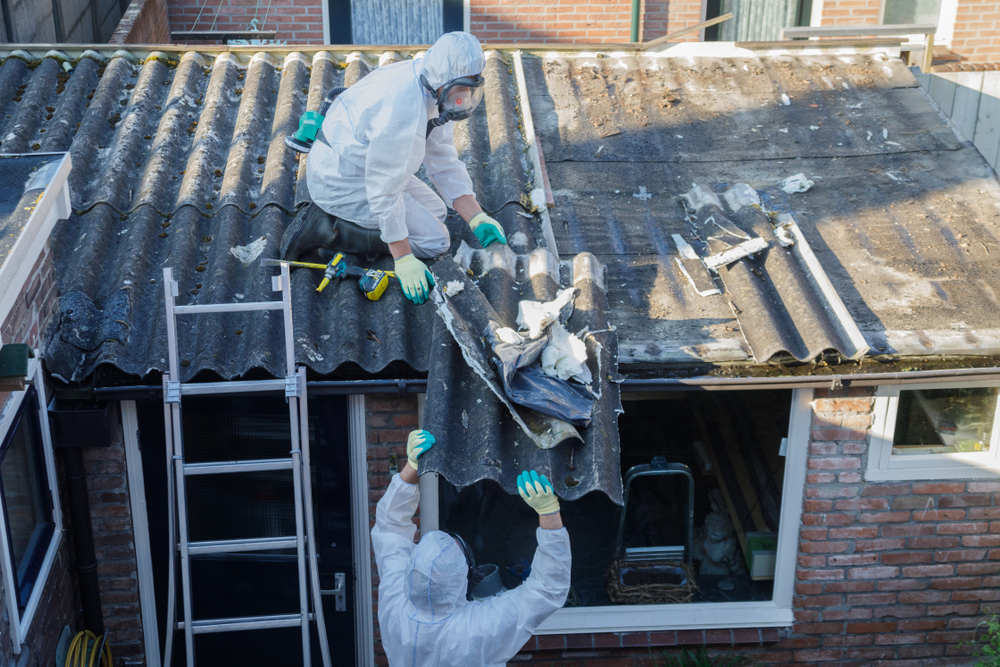
Asbestos is a hazardous mineral fiber that has been used in construction materials for decades, and it can cause serious health problems if exposure occurs.
Unfortunately, storm damage can cause asbestos to be released into the air, creating an even greater risk of potential exposure. If you suspect your home or building may have been affected by storm damage that could contain asbestos, it’s important to take action right away.
Here are three questions about storm damage and asbestos exposure answered so you know how to protect yourself and your family from any potential dangers.
#1 — What is asbestos?
Asbestos is a hazardous mineral fiber that was commonly used in construction materials until it was subject to tighter regulations in the 1970s due to its carcinogenic properties.
“Asbestos fibers have industrial and commercial applications because of their strength, flexibility and electrical and heat resistant properties,” the Centers for Disease Control and Prevention explains. “Some examples of products that may contain asbestos include automobile brakes, insulation materials, and cement.
While undisturbed asbestos is typically harmless, if it becomes damaged or disturbed, it can cause health issues.
Exposure to asbestos can cause serious health problems, including lung cancer, mesothelioma, and asbestosis. These conditions typically begin to develop years after exposure, making it imperative that you take any potential exposure to asbestos seriously and take steps to protect yourself and your family now to ensure a healthy future.
#2 — Can storm damage cause asbestos to be released?
“It is essential to consider and properly prepare for asbestos exposure prevention when planning for natural disasters and severe weather,” according to the Mesothelioma Center. “Knowing how to keep safe from asbestos after a disaster can help prevent health conditions later in life.”
After all, storm and hurricane damage can cause asbestos to be released if the material containing asbestos is damaged or disturbed. Severe wind, rain, or hail can dislodge asbestos-containing materials, such as roof tiles or insulation, and send fibers into the air. If the damage is severe enough, it can create a potential health hazard for anyone in the vicinity.
If you suspect that your home or commercial building has been affected by storm damage that may have exposed asbestos, it’s important to take action right away. If asbestos is found, it will need to be removed by a licensed abatement contractor to ensure that it is properly contained and disposed of.
#3 — How can I protect myself and my family from exposure to asbestos?
If you suspect that your home or building has been affected by storm damage that may have exposed asbestos, the most important thing you can do is to have a professional asbestos inspection performed.
This is because, as confirmed by OSHA, “There is no ‘safe’ level of asbestos exposure for any type of asbestos fiber,” and homeowners should avoid contact entirely until it can be handled by a qualified asbestos professional.
You can verify an individual’s asbestos credentials in Florida HERE.
Otherwise, refrain from entering any areas that may have been affected by the storm damage, and do not attempt to clean up any debris yourself. If you have any concerns about asbestos exposure, remember to speak with your doctor.
Again: To ensure that you’re calling a qualified professional for your asbestos concerns, it’s always best to rely on locally trusted indoor environmental experts like — Luce Air Quality. With Dave Luce’s completion of the National Institute for Occupational Safety and Health (NIOSH) 582 certification, you can trust that our team is equipped to provide professional asbestos surveys!
If you’re interested in learning more about our expertise and how we can help you overcome asbestos concerns, feel free to contact us today at 904-803-1014!


